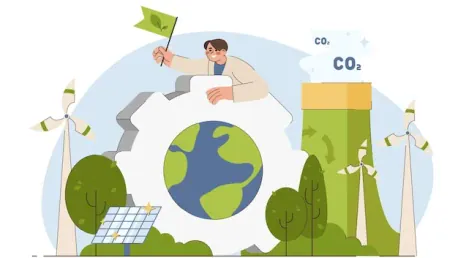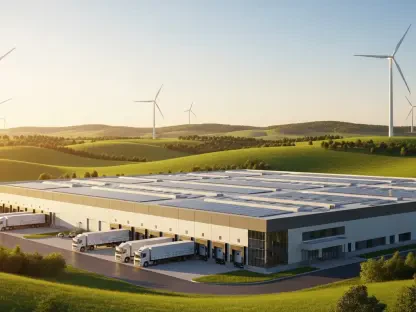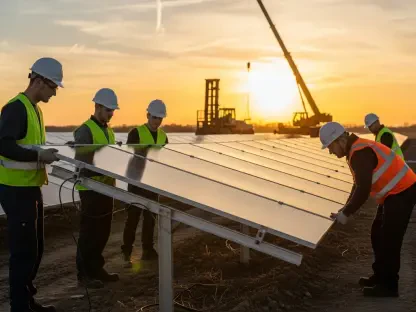The recently released report by the International Energy Agency (IEA), titled “The State of Energy Innovation,” offers a crucial overview of the current landscape and trends in global energy technology development. At a time when investment momentum in these technologies shows signs of waning, this report underscores the essential role that continued innovation plays in shaping national energy and industrial strategies. The findings are significant for policymakers and industry leaders navigating the ever-evolving energy landscape.
The Vital Role of Innovation in Energy Strategies
The report illustrates how innovation has been central to advancing national energy and industrial strategies. Historical examples, such as the response to the energy crises of the 1970s, serve as compelling reminders of the economic and security benefits derived from public investments in research and development (R&D). These past investments were instrumental in expanding nuclear power and reducing dependency on imported fuels. Modern advancements in batteries and electric vehicles (EVs) demonstrate how such innovations continue to reduce dependency on imported fuels and improve national energy security, especially in major economies like China and the United States.
Countries now increasingly focus on economic competitiveness and resilience, making energy innovation more critical than ever. Despite significant progress in recent years, with R&D spending growing steadily, the anticipated slowdown in 2024, particularly in advanced economies, poses a risk to maintaining this momentum. This anticipated slowdown raises concerns about the capability of nations to sustain the high levels of investment required to foster groundbreaking energy technologies. The growing emphasis on innovation reflects the broader economic and security strategies that many countries are now adopting.
Shifting Investment Patterns in Energy Innovation
The report notes that investment patterns in energy innovation have varied significantly across different sectors. While corporate R&D in sectors like automotive and renewable energy has seen economic growth rates outpacing others, sectors such as cement and steel have not kept pace. This uneven distribution of investment highlights the challenges faced by traditional industries in transitioning towards more sustainable energy solutions. Additionally, R&D spending in aviation and shipping has declined over the past decade, raising concerns about the ability of these crucial industries to achieve significant advancements in energy efficiency and emissions reduction.
IEA Executive Director Fatih Birol emphasizes the importance of innovation, given the rapid changes in the global energy mix and electrification trends. Although numerous promising technologies are nearing market readiness, scaling these solutions requires significant investment from both public and private sectors. The long-term benefits of these investments, though not immediately visible, are potentially profound. The continuation of high levels of R&D investment will be essential for translating these technological advancements into widespread practical applications, which can reshape the global energy landscape.
Venture Capital and Regional Disparities
Venture capital (VC) funding has been a major driver of energy technologies, increasing more than sixfold from 2015 to 2022. However, tighter financial conditions have led to a decline in VC funding by over 20% in 2023 and 2024. While the AI sector remains an exception, seeing continued growth, this trend could potentially accelerate energy innovation but also risks diverting funds from the energy sector. The dynamic nature of venture capital investments underscores the need for a balanced approach to ensuring steady funding for energy innovation amidst shifting financial landscapes.
Regional investment patterns show significant disparities. China leads in energy patenting, with a strong focus on low-emissions technologies. Globally, the effort to patent low-emissions technologies has outpaced fossil fuel-related patents by a considerable margin, reflecting a growing international commitment to sustainable energy solutions. Europe is proactive in engineering projects, while the United States maintains a diverse portfolio across fossil and clean energy technologies. Yet, other regions lag behind, particularly in funding large-scale demonstration projects. The disparities in regional investment point to the need for more coordinated global efforts to ensure that all regions can contribute to and benefit from advances in energy technology.
Challenges in Financing and Demonstration Projects
The report highlights the need for more public and private investment in large-scale energy technology demonstration projects, with North America, Europe, and China accounting for 95% of such funding. These demonstration projects are crucial for commercializing new technologies, but inflation and policy uncertainty have caused delays. This funding concentration underlines the challenges faced by other regions in keeping pace with the leading innovators. Specific sectors, such as heavy industry and long-distance transport, receive only 17% of total funding, despite being in dire need of low-emissions options.
To address these funding imbalances, coordinated global actions are required to ensure that key technologies can overcome the “valley of death” and meet climate goals. This involves not only increasing investment but also creating a more predictable policy environment that can guide and support long-term advancements. As government priorities shift, it is essential to maintain a steady flow of funding and strategic direction for energy innovation. This approach will help bridge gaps in the current system and enable emerging technologies to transition from experimental phases to market-ready solutions.
Recommendations for Sustained Innovation Momentum
The recently released report by the International Energy Agency (IEA), titled “The State of Energy Innovation,” provides a vital analysis of the current trends and landscape in global energy technology development. This comes at a critical time when the momentum in investing in these technologies appears to be slowing down. The report highlights the indispensable role that ongoing innovation holds in shaping national energy policies and industrial strategies. This is particularly important for policymakers and industry leaders who must navigate the rapidly changing energy sector. The IEA’s findings emphasize the importance of maintaining and even increasing investment in energy technology innovations to ensure sustainable development and progress. For stakeholders, this report serves as a roadmap to understand and act on the evolving needs and opportunities within the energy domain. This insight becomes increasingly crucial as the world confronts the dual challenges of energy security and climate change mitigation.









